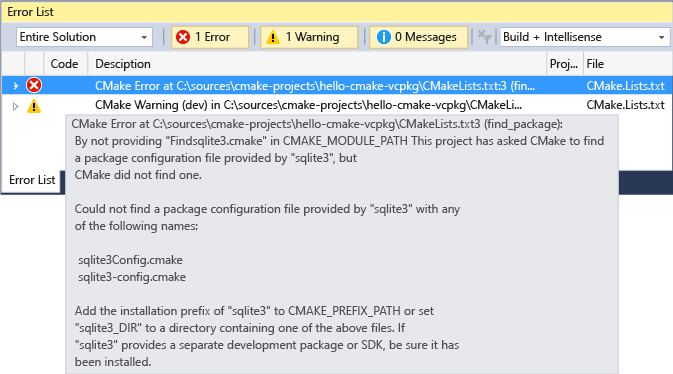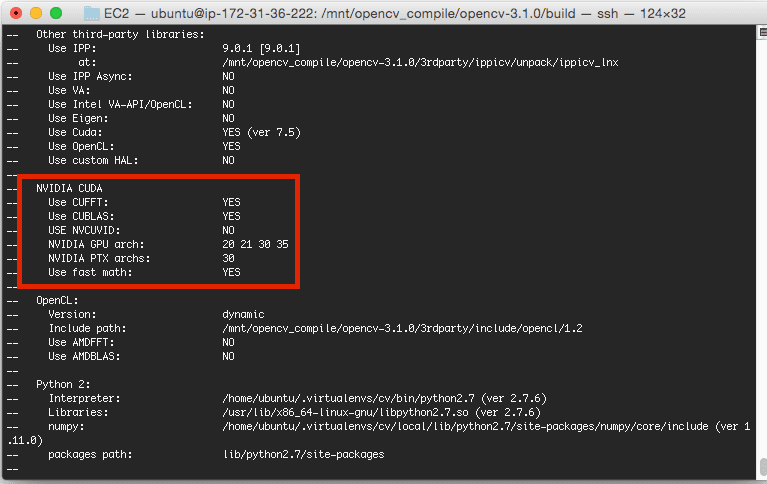Cmake -E env much slower than plain env. 2: 90: February 3, 2021 CROSSCOMPILINGEMULATOR property with emulator arguments for GoogleTest. 2: 92: August 3, 2020 CMake 3.18.0-rc2 is ready for testing. 0: 167: June 17, 2020.
If you already have Visual Studio projects (.vcxproj) and solutions (.sln) for your Azure Sphere applications, you'll need to convert them to use CMake. You can still open your Azure Sphere projects in Visual Studio to inspect project properties and other settings, but starting with the 20.01 release, they will not build successfully.
- In this article, we’ll learn to install cmake on Linux. CMake is a cross-platform open-source meta-build system that can build, test, and package software.It can be used to support multiple native build environments including make in Linux/Unix, Apple’s Xcode, and Microsoft Visual Studio.
- The variable CMAKECXXSTANDARD is really the only 'toolchain-agnostic' way to set the C version to use. And it only allows specific pre-defined values, unfortunately. And it only allows specific pre-defined values, unfortunately.
- Writing good documentation is hard. Tools can’t solve this problem in themselves, but they can ease the pain. This post will show you how to use Sphinx to generate attractive, functional documentation for C libraries, supplied with information from Doxygen. We’ll also integrate this process into a CMake build system so that we have a unified workflow.
- CMake is an extensible, open-source system that manages the build process.
The easiest way to change a high-level app project to build with CMake is to start with the HelloWorld_HighLevelApp sample. You'll need to perform the following steps:
Update main.c from your application.
Copy any other C files that your application requires into the project folder.
Open the CMakeLists.txt file and add any files that require compilation to the
add_executableline. For example:add_executable (${PROJECT_NAME} main.c file1.c file2.c)Add any required libraries to the
target_link_librariesline. For example:target_link_libraries (${PROJECT_NAME} applibs pthread gcc_s c mycustomlibrary)You can see which libraries your existing Visual Studio project uses by looking at the Linker inputs in the Project Properties. The exact menu items or keyboard shortcuts to view the linker inputs depends on which version of Visual Studio or Visual Studio Code you're using.
Make sure you are calling the correct Azure Sphere CMake functions. In particular:
azsphere_target_add_image_package to set up the rules to create the image package file and to specify any resources files to include when building. For example:
Minimum Version
Here's the first line of every CMakeLists.txt, which is the required name ofthe file CMake looks for:
Let's mention a bit of CMake syntax. The command namecmake_minimum_required is case insensitive, so the common practiceis to use lower case. 1 The VERSION is a special keyword for thisfunction. And the value of the version follows the keyword. Like everywhere inthis book, just click on the command name to see the official documentation,and use the dropdown to switch documentation between CMake versions.

This line is special! 2 The version of CMake will also dictate the policies,which define behavior changes. So, if you set minimum_required to VERSION2.8, you'll get the wrong linking behavior on macOS, for example, even in thenewest CMake versions. If you set it to 3.3 or less, you'll get the wronghidden symbols behaviour, etc. A list of policies and versions is available atpolicies.
Starting in CMake 3.12, this supports a range, such as VERSION 3.1...3.15;this means you support as low as 3.1 but have also tested it with the newpolicy settings up to 3.15. This is much nicer on users that need the bettersettings, and due to a trick in the syntax, it's backward compatible with olderversions of CMake (though actually running CMake 3.1-3.11 will only set the 3.1version of the policies in this example, since those versions didn't treat thisspecially). New versions of policies tend to be most important for macOS andWindows users, who also usually have a very recent version of CMake.
This is what new projects should do:
If CMake version is less than 3.12, the if block will be true, and the policywill be set to the current CMake version. If CMake is 3.12 or higher, the ifblock will be false, but the new syntax in cmake_minimum_required will berespected and this will continue to work properly!
Cmakelists Example
WARNING: MSVC's CMake server mode originally had abug in reading this format, so ifyou need to support non-command line Windows builds for older MSVC versions,you will want to do this instead:
If you really need to set to a low value here, you can usecmake_policy to conditionally increase the policy level or set aspecific policy. Please at least do this for your macOS users!
Setting a project
Now, every top-level CMake file will have the next line:

Now we see even more syntax. Strings are quoted, whitespace doesn't matter, andthe name of the project is the first argument (positional). All the keywordarguments here are optional. The version sets a bunch of variables, likeMyProject_VERSION and PROJECT_VERSION. The languages are C, CXX,Fortran, ASM, CUDA (CMake 3.8+), CSharp (3.8+), and SWIFT (CMake3.15+ experimental). C CXX is the default. In CMake 3.9, DESCRIPTION wasadded to set a project description, as well. The documentation forproject may be helpful.
You can addcommentswith the # character. CMake does have an inline syntax for comments too, butit's rarely used.
There's really nothing special about the project name. No targets are added at this point.
Making an executable
Although libraries are much more interesting, and we'll spend most of our timewith them, let's start with a simple executable.
There are several things to unpack here. one is both the name of the executable file generated, and the name of the CMake target created (you'll hear a lot more about targets soon, I promise). The source file list comes next, and you can list as many as you'd like. CMake is smart, and will only compile source file extensions. The headers will be, for most intents and purposes, ignored; the only reason to list them is to get them to show up in IDEs. Targets show up as folders in many IDEs. More about the general build system and targets is available at buildsystem.
Making a library

Making a library is done with add_library, and is just about as simple:
You get to pick a type of library, STATIC, SHARED, or MODULE. If you leave this choice off, the value of BUILD_SHARED_LIBS will be used to pick between STATIC and SHARED.

As you'll see in the following sections, often you'll need to make a fictional target, that is, one where nothing needs to be compiled, for example, for a header-only library. That is called an INTERFACE library, and is another choice; the only difference is it cannot be followed by filenames.
Cmake Find_package
You can also make an ALIAS library with an existing library, which simply gives you a new name for a target. The one benefit to this is that you can make libraries with :: in the name (which you'll see later). 3
Targets are your friend
Now we've specified a target, how do we add information about it? For example, maybe it needs an include directory:
target_include_directories adds an include directory to a target. PUBLIC doesn't mean much for an executable; for a library it lets CMake know that any targets that link to this target must also need that include directory. Other options are PRIVATE (only affect the current target, not dependencies), and INTERFACE (only needed for dependencies).
We can then chain targets:
target_link_libraries is probably the most useful and confusing command in CMake. It takes a target (another) and adds a dependency if a target is given. If no target of that name (one) exists, then it adds a link to a library called one on your path (hence the name of the command). Or you can give it a full path to a library. Or a linker flag. Just to add a final bit of confusion, classic CMake allowed you to skip the keyword selection of PUBLIC, etc. If this was done on a target, you'll get an error if you try to mix styles further down the chain.
Focus on using targets everywhere, and keywords everywhere, and you'll be fine.
Targets can have include directories, linked libraries (or linked targets), compile options, compile definitions, compile features (see the C++11 chapter), and more. As you'll see in the two including projects chapters, you can often get targets (and always make targets) to represent all the libraries you use. Even things that are not true libraries, like OpenMP, can be represented with targets. This is why Modern CMake is great!
Dive in
See if you can follow the following file. It makes a simple C++11 library and a program using it. No dependencies. I'll discuss more C++ standard options later, using the CMake 3.8 system for now.
1. In this book, I'll mostly avoid showing you the wrong way to do things; you can find plenty of examples of that online. I'll mention alternatives occasionally, but these are not recommended unless they are absolutely necessary; often they are just there to help you read older CMake code. ↩
2. You will sometimes see FATAL_ERROR here, that was needed to support nice failures when running this in CMake <2.6, which should not be a problem anymore. ↩3. The::syntax was originally intended forINTERFACE IMPORTEDlibraries, which were explicitly supposed to be libraries defined outside the current project. But, because of this, most of thetarget_*commands don't work onIMPORTEDlibraries, making them hard to set up yourself. So don't use theIMPORTEDkeyword for now, and use anALIAStarget instead; it will be fine until you start exporting targets. This limitation was fixed in CMake 3.11. ↩
